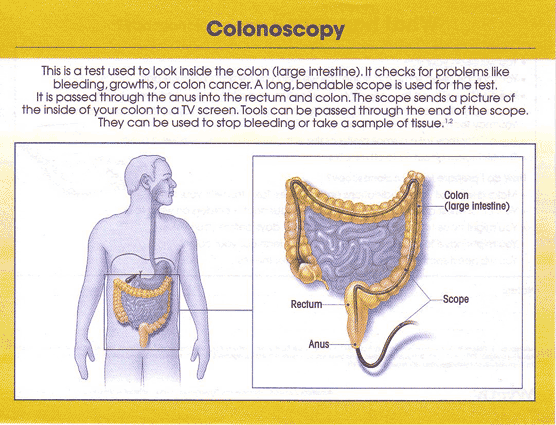Colonoscopy
Patient preparations for a Colonoscopy can be read in the Colonoscopy Preparation Sheet.
Colonoscopy is a procedure whereby a flexible tube is inserted into the rectum and advanced through the colon to examine the lining. Biopsies of any abnormalities can be taken, and most polyps can be removed. Colonoscopy is done to search for polyps and early cancer as part of routine cancer screening for patients over age 50. It is also done to seek out the causes of rectal bleeding, prolonged diarrhea, new onset of constipation, and sudden onset of altered bowel habits. The colon is about 5 feet long, has many twists and turns, and occasionally is so tortuous that Colonoscopy cannot be completed.
In our hands the risk of perforation (making a tear in the colon) has been zero. Rarely, after a polyp has been removed, if the scab falls off prematurely, bleeding has occurred. This can usually be controlled endoscopically. The lining is carefully examined, but 100% of the colon cannot usually be seen, and there is a very small chance that polyps could be missed. This is due to the human element of the exam. Ordinarily, the exam takes 30 minutes and then the patients must recover another 30 minutes after the exam before being discharged. The patient should feel normal within hours. The test is done as an outpatient procedure, with intravenous sedation, making it very unlikely that anyone can remember or feel the procedure. Due to the sedation, a driver is required. Biopsy results are usually ready within a week. Colonic surveillance time frames are listed in another patient information sheet on this web page. In short, colonoscopy is safe (in our hands), pain free, and a relatively simple outpatient procedure.

